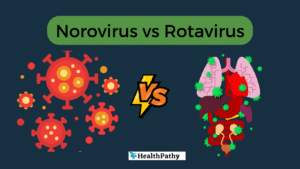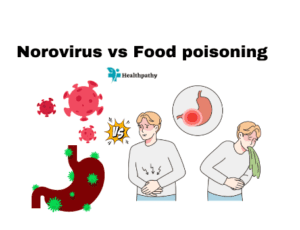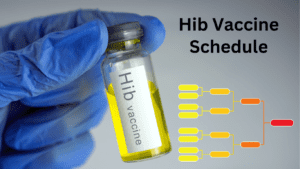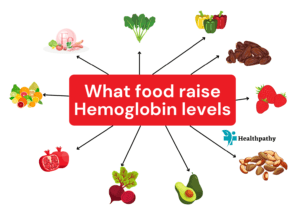Norovirus vs Rotavirus

There are two common viral infections norovirus and rotavirus that affect the gastrointestinal system, particularly in children. Both viruses can cause gastroenteritis, which is characterized by symptoms such as vomiting, diarrhea, and abdominal pain. However, there are several key differences between norovirus and rotavirus, including their modes of transmission, age groups affected, and vaccination options.
Norovirus:
Norovirus is a highly contagious virus that is responsible for a significant number of cases of acute gastroenteritis in both children and adults. It is known for causing outbreaks in various settings, such as schools, cruise ships, hospitals, and restaurants. The virus spreads through the ingestion of contaminated food or water, direct contact with infected individuals, or touching contaminated surfaces.
Symptoms of norovirus:
Symptoms of norovirus infection usually appear within 12 to 48 hours after exposure and may include-
- Sudden onset of nausea.
- Vomiting.
- Diarrhea
- Abdominal cramps.
- Fever.
- Headache.
- Muscle aches.
The illness can be quite severe, leading to dehydration, especially in vulnerable populations like young children, the elderly, and individuals with weakened immune systems.
Norovirus infections are typically self-limiting and resolve within 1 to 3 days without specific treatment. Supportive care, such as rehydration with oral electrolyte solutions, rest, and avoiding contact with others during the illness, is crucial to managing the infection.
Rotavirus:
Rotavirus is another common cause of gastroenteritis, primarily affecting infants and young children. It is the leading cause of severe diarrhea and dehydration in children worldwide. Unlike norovirus, rotavirus is primarily transmitted through the fecal-oral route, often due to inadequate hand hygiene after using the restroom or changing diapers.
Symptoms of rotavirus:
Symptoms of rotavirus infection usually appear within 2 to 3 days after exposure and can include-
- Vomiting.
- Watery diarrhea.
- Fever.
- Abdominal pain.
The illness can be severe, leading to dehydration, and in some cases, it may require hospitalization for rehydration and supportive care.
Vaccination has played a critical role in reducing the burden of rotavirus infections. Since 2006, vaccines against rotavirus have been available and recommended for routine immunization in many countries. These vaccines have been highly effective in preventing severe rotavirus-related illnesses and hospitalizations in young children.
Comparison: Norovirus vs Rotavirus
Transmission:
Norovirus is primarily transmitted through person-to-person contact, contaminated food or water, and contact with contaminated surfaces. On the other hand, rotavirus spreads primarily through the fecal-oral route, often due to poor hand hygiene after using the restroom or changing diapers.
Age groups affected:
Norovirus can affect individuals of all ages, including children and adults, while rotavirus primarily affects infants and young children, typically between 6 months and 2 years of age.
Vaccine availability: Norovirus vs Rotavirus
Vaccines are available for rotavirus, and they have been incorporated into routine childhood immunization schedules in many countries. These vaccines are highly effective in preventing severe rotavirus infections and related complications. As of my last update in September 2021, no specific vaccine for norovirus was available.
The severity of illness:
Both viruses can cause severe gastroenteritis, but rotavirus infections are particularly concerning in young children due to the risk of dehydration and hospitalization. Norovirus infections can be severe as well, especially in vulnerable populations, but they are generally shorter in duration compared to rotavirus infections.
Conclusion:
Norovirus and rotavirus are both viral infections that cause gastroenteritis, but they have notable differences in their modes of transmission, age groups affected, and vaccine availability. While norovirus can affect individuals of all ages and primarily spreads through person-to-person contact and contaminated surfaces, rotavirus primarily affects young children and is transmitted through the fecal-oral route. Vaccination against rotavirus has proven to be effective in reducing the severity of infections, especially in infants and young children, but no specific vaccine is available for norovirus at this time. Proper hygiene practices, including handwashing and food safety measures, are essential in preventing the spread of both viruses.
Read More:



Follow us: Norovirus vs Rotavirus





